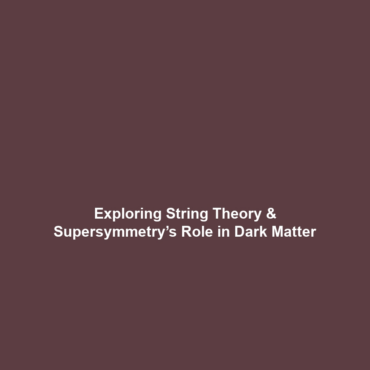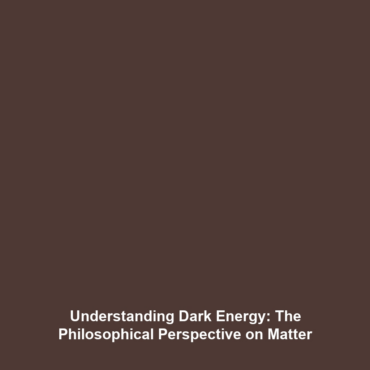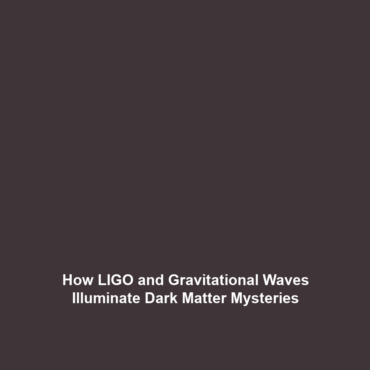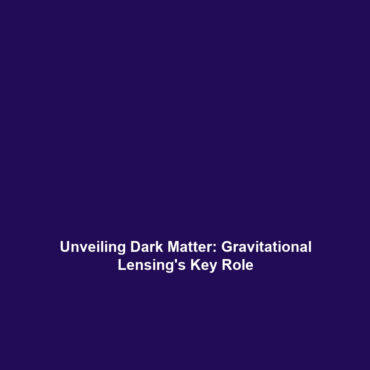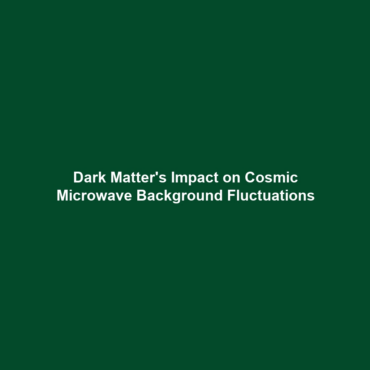Upcoming Missions: What the James Webb Space Telescope (JWST) Could Reveal About Dark Energy
Introduction
As we stand on the brink of a new era in astronomical exploration, the James Webb Space Telescope (JWST) promises to reshape our understanding of dark energy, an elusive component constituting about 68% of the universe. The significance of the JWST lies in its advanced capabilities to study the cosmos at unprecedented levels of detail. This article delves into the upcoming missions of the JWST and their potential revelations about dark energy, situating this research firmly within the broader realms of dark matter and dark energy.
Key Concepts
The groundwork for understanding dark energy and its cosmic implications involves several major concepts:
- Dark Energy and Cosmic Acceleration: Dark energy is believed to be responsible for the accelerated expansion of the universe, a phenomenon first identified in the late 1990s.
- The Role of the JWST: Equipped with enhanced infrared capabilities, the JWST can observe distant galaxies and cosmic events that shed light on the nature of dark energy.
- Current Theories and Models: Various models exist to explain dark energy, ranging from cosmological constant to dynamic fields, which will be tested through observations made by the JWST.
Applications and Real-World Uses
Research from the JWST about dark energy could have significant practical applications, including:
- Improving Cosmological Models: Findings from JWST missions could refine existing models of the universe’s expansion.
- Impact on Space Exploration: Understanding dark energy can inform future missions beyond our solar system, enhancing propulsion technologies and navigation.
- Public Engagement and Education: The discoveries from the JWST will inspire further interest in astronomy and science education, highlighting the importance of understanding our universe.
Current Challenges
Despite the JWST’s promising capabilities, several challenges persist:
- Technological Limitations: High precision measurements are necessary, and any technical glitches could hinder data collection.
- Funding and Resource Allocation: Ongoing maintenance and upgrades require substantial financial investments, which may compete with other scientific priorities.
- Interpretational Complexity: Data interpretation is intricate, needing sophisticated models to accurately discern the implications regarding dark energy.
Future Research and Innovations
The future of research surrounding the JWST and dark energy looks promising, with potential innovations anticipated:
- Enhanced Observational Techniques: Developing more advanced imaging techniques may yield even clearer insights into dark energy phenomena.
- Next-Generation Space Telescopes: The findings from the JWST will pave the way for subsequent telescopes that build upon its discoveries, potentially leading to revolutionary breakthroughs in our understanding of the universe.
- International Collaboration: Ongoing collaborations among global scientific communities may foster innovative solutions to complex cosmological questions.
Conclusion
In conclusion, the James Webb Space Telescope stands to make groundbreaking contributions to our understanding of dark energy, revealing insights that reshape our comprehension of dark matter and the universe itself. As the JWST embarks on its missions, scientists are poised to explore uncharted territories in cosmology. For more on the implications of dark matter and dark energy, consider reading our articles on Dark Matter Mysteries and Advancements in Astrophysics.

